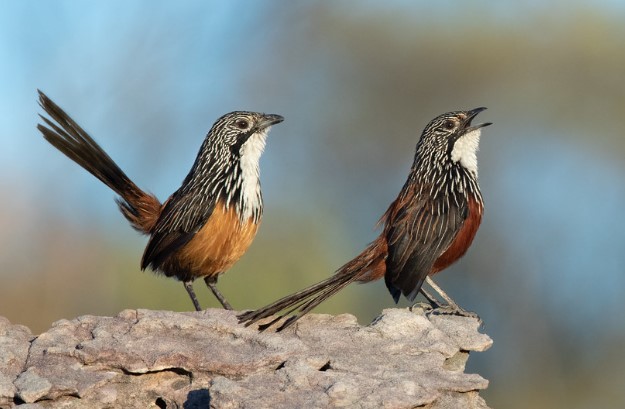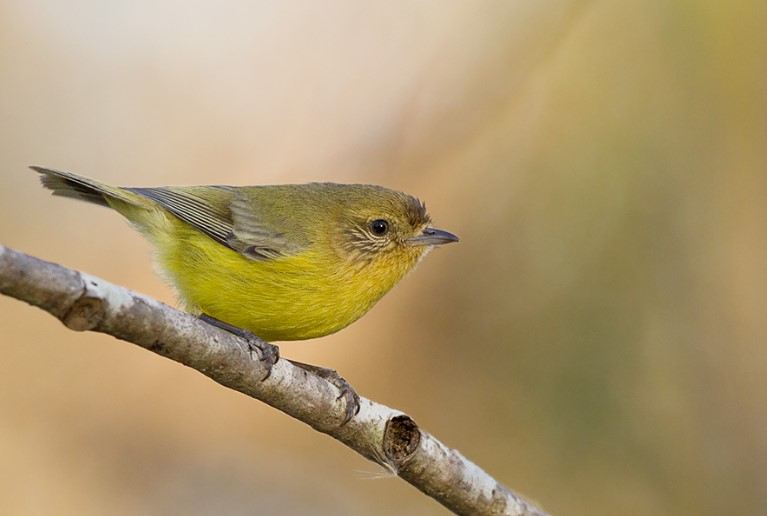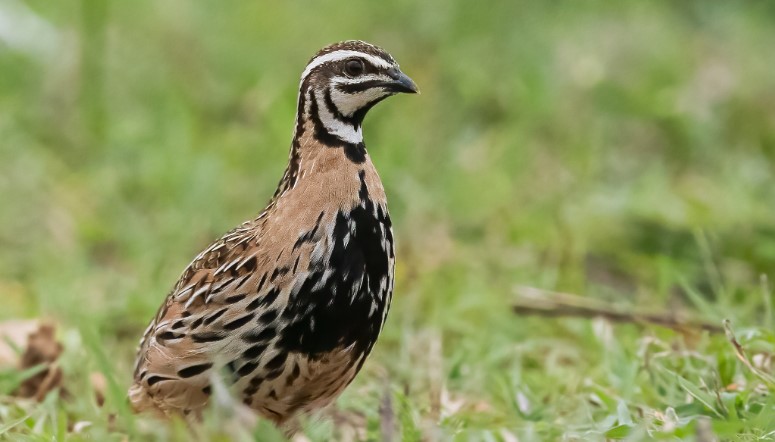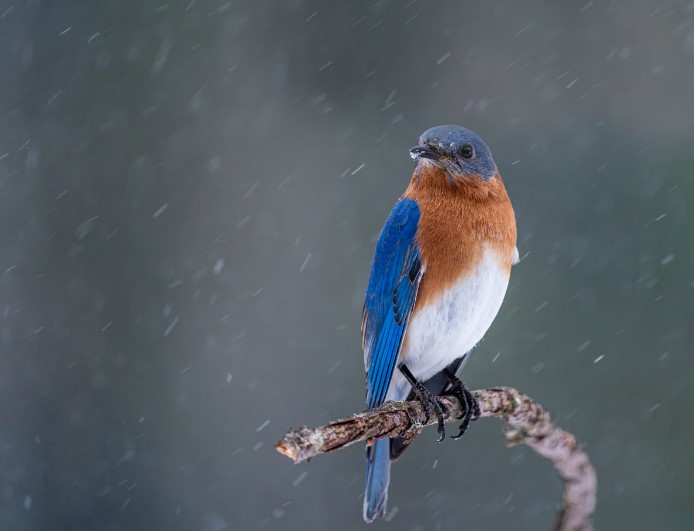The white-throated grasswren (Amytornis woodwardi) also known as Yirlinkirrkirr (Bininj Kunwok, cultural significance to the Nawarddeken people) in the local language, belongs to the family Maluridae. White-throated Grasswrens have the largest and most brilliant coloration of grasswren species. Located east of Darwin on several spinifex-clad sandstone escarpments, this species is plentiful, but rarely seen. There is only one threat to the spinifex: fire.
Grasswrens are sedentary but also shy and evasive. The species associates in small groups of six to eight birds when not breeding. They feed on small insects and seeds on the ground and other vegetable matter, alertly among clumps of spinifex and over the rocks, probably consisting of one or two adult pairs with their young from the previous season.
Read More – Striated Grasswren (Amytornis striatus)
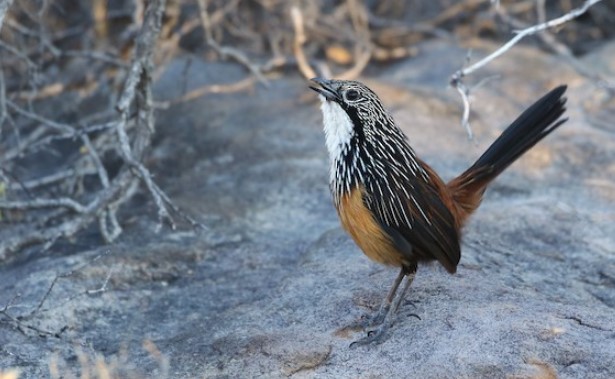
They flutter their tails slightly, flirting and waving as they dart about one another. It is often the males who lead the group or pair, bounding ahead and jumping up on rocks to call and sing briefly; however, the Black Grasswren is generally much quieter than the males. A grasswren disperses rapidly when disturbed, running from cover to cover in quick bursts and at great speed, with its tail and head lowered.
It is rare for them to be flushed from cover, but if they are, they will perform short, low, direct flights with rapidly beating wings and tails trailing. The bird’s crane sometimes peeks curiously from behind the cover. In the Kimberley Division, the White-throated Grasswren is a relative of the Black Grasswren, while in the Gulf of Carpentaria, it is a relative of the Carpentarian Grasswren. During the northern Australian wet season, they breed in the same habitat and during the same timeframe.
White-throated Grasswrens are typically 200–220 mm in length, while males are usually larger. The head, face, and upper back of the male are black with thin white streaks, grading into chestnut on the lower back and underneath the rump. Lords are off-white; there is a black line down the sides of their necks, but they do not have brows. The wings are dusky black, and the coverts are thinly edged chestnut. The tail is long, bushy, and dusky black in color. Its tawny belly and chestnut undertail are separated from the white throat and breast by broad black-edged lanceolate white feathers. The eyes are brown in color. Light at the base of the bill, grey-black in color. Grey-brown to dark grey feet. The belly of the female is deep chestnut-brown, like that of the male. In mature birds, the upper surface is duller with fewer distinct streaks, while the belly is paler tawny in both sexes, the breast band is not well developed, and the bill is paler.
Read More: Eyrean Grasswren (Amytornis goyderi)
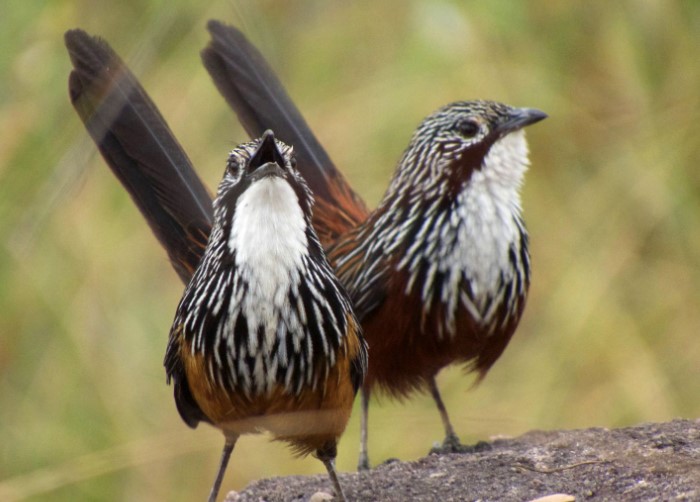
The parties separate into pairs during breeding, sometimes with an additional helper, and the male takes up a territory that he advertises by singing throughout the day. His voice is carried from a vantage point such as a prominent rock; he holds his tail partially raised, throws up his head, droops his wings, and tilts his head as he beams it out in different directions. White-throated Grasswrens have a strong, sharp trrrrt or tzzzt call repeated occasionally in alarm. Breeding males, however, sing long notes with rising and falling trills that carry for 100 m and beyond.
The nesting and breeding season occurs from December to March during the wet monsoon. One brood is probably all the bird lays each year. It consists of a bulky oval dome shape, with a side entrance towards the top, with closely interwoven grass stems reinforced along the back and base with broader leaves, lining the inside with fine grass stems, built on top of a clump of spinifex about 350 mm above ground in small rocky breakaways.
Two white-pink eggs are laid, sparingly speckled and blotched with red-brown and underlying markings of purple-grey. There is an indistinct zone at the larger end of the eggs. They are oval in shape about 23 x 16 millimeters in size. The White-throated Grasswren is restricted to sandstone escarpments of western Arnhem Land, from Spencer Range south to the headwaters of South Alligator River, and from central Arnhem Land east to Nitmiluk National Park and northeast to Mann River. The sandstone rock is covered with spinifex tussocks and other low shrub growth, which form tumbled breakaways and gentle slopes. There are no races.
Read More – Shy Heathwren- Discover the Hidden Beauty of This Elusive Bird
